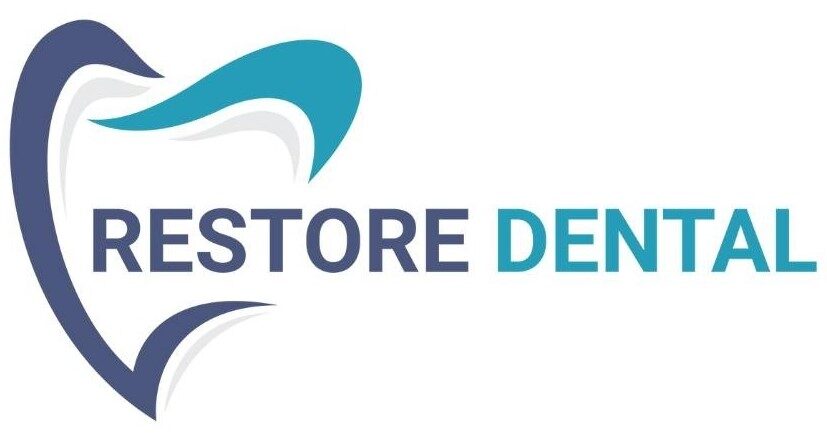The 50-40-30 Rule in Smile Design
A naturally beautiful smile goes beyond just straight teeth—subtle proportions and spacing between the teeth play a major role in how a smile is perceived. At Restore Dental, our approach to smile design in Gurgaon incorporates advanced aesthetic principles like the 50-40-30 rule, which refers to the ideal proportions of interproximal contact areas between the front teeth.
Let’s explore what this rule means and how it impacts dental aesthetics.
What Is the 50-40-30 Rule?
The 50-40-30 rule outlines the percentage length of the contact area (where adjacent teeth touch) along the vertical height of the front teeth:
- Central incisors: 50% contact area
- Lateral incisors: 40% contact area
- Canines: 30% contact area
This gradual reduction in contact area from the central incisors to the canines creates a smooth, natural transition across the front teeth, contributing to a harmonious and youthful smile.
Why Contact Area Proportions Matter
The shape, size, and proportion of contact areas affect:
- Tooth symmetry and alignment
- Embrasure spaces (the V-shaped spaces between teeth)
- The appearance of “black triangles” (dark spaces between teeth when contact areas are too short or absent)
Maintaining appropriate contact areas enhances the aesthetic balance and avoids visual gaps that can age the smile or make teeth appear misaligned.
Research-Backed Aesthetic Preferences
A study published in the British Dental Journal found:
- Smiles with gradually increasing embrasure spaces (from central incisors to canines) were consistently rated as most attractive.
- Contact areas following the 50-40-30 rule and even 50-50-50 distribution were both highly favored.
- Smiles with missing or reversed contact areas (creating “black triangles”) were ranked least attractive by dentists, technicians, and patients alike.
Practical Takeaways for Smile Designers
- Follow the 50-40-30 ratio to maintain natural proportions and eliminate awkward spacing.
- Avoid excessive or uneven embrasures that disrupt the harmony of the smile.
- Prevent black triangles by maintaining appropriate contact lengths and gingival support.
Restore Dental’s Smile Philosophy
At Restore Dental, we blend science with aesthetics to create naturally attractive smiles. Our experts use the 50-40-30 principle to ensure your smile:
- Looks youthful and symmetrical
- Avoids unsightly gaps and imbalances
- Enhances facial aesthetics without looking artificial
Book Your Smile Consultation Today
Want to learn how subtle proportions can elevate your smile? Let the experts at Restore Dental assess your smile and create a customized plan based on proven aesthetic principles like the 50-40-30 rule. With our advanced Digital Dentistry in Gurgaon, we ensure precision and personalization at every step. Achieve the smile you deserve—naturally and beautifully.
FAQs
01. What is the 50-40-30 rule in dentistry?
The 50-40-30 rule refers to the percentage of vertical tooth contact between the front teeth. Ideally, the contact area between:
- The two central incisors should be 50% of the crown length
- Between central and lateral incisors should be 40%
Between lateral incisors and canines should be 30%
This proportion helps create a balanced and natural-looking smile
02. Why are interproximal contact areas important in smile design?
These contact areas affect how light reflects between the teeth, influence symmetry, and prevent unwanted gaps (commonly called “black triangles”). Proper contact areas also contribute to the health of the gum tissue.
03. What happens if the 50-40-30 ratio is not followed?
If contact areas are too short or misaligned, it can result in unattractive gaps, uneven tooth shapes, or disproportionate spacing. This may affect both the aesthetics and function of the smile.
04. Is the 50-40-30 rule applicable for everyone?
While it’s a widely accepted guideline, every smile is unique. Dentists use this rule as a starting point and adjust based on individual tooth anatomy, gum health, and facial features.
05. Can black triangles between teeth be fixed with the 50-40-30 rule?
Yes, adhering to proper contact lengths and adjusting tooth proportions using bonding, veneers, or orthodontics can help eliminate or reduce black triangles and restore harmony to the smile.
06. Is the 50-40-30 rule used in cosmetic procedures like veneers or Invisalign?
Absolutely. Cosmetic treatments like veneers, crowns, and Invisalign often follow this principle to ensure natural tooth contact and spacing, contributing to both function and appearance.
07. How can I find out if my smile follows the 50-40-30 rule?
A professional dental consultation at a clinic like Restore Dental includes a digital smile analysis where your tooth proportions and contact areas are measured to see if aesthetic adjustments are needed.
08. Will fixing tooth contact areas improve my smile?
Yes. Adjusting tooth proportions and contact lengths can dramatically improve smile aesthetics, making teeth look more aligned, youthful, and naturally spaced.

